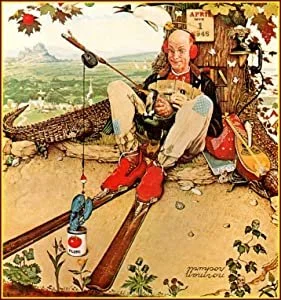Observed in much of the Western world on the first day of April of every year, this is recognized as a day for practical jokes and general foolishness. The day is "celebrated" with good humor, hoaxes and practical jokes of varying sophistication.
History
Some historians trace the inception of April Fools’ Day to the 18th century, but theories about earlier origins abound. Some attribute the name to Geoffrey Chaucer's "The Canterbury Tales," which has a line that reads syn March bigan thritty dayes and two. Some interpret this as March 32, or April 1, but most scholars believe it refers to 32 days after March (May 3).
The ancient Romans held a spring festival celebrating the resurrection of Attis and the famous Roman Saturnalia. Medieval Europeans held an annual Feast of Fools, with ample opportunities for upending social order. All occurred around the end of March.
Poisson d’Avril
When French King Charles IX reformed the nation’s calendar in 1564, moving New Years from the end of March to January 1, there were some citizens who did not adopt the change, holding onto the older calendar and continuing to celebrate New Years between March 25 and April 1. These stubborn folks had jokes played on them. Pranksters stuck paper fish to their backs and called them Poisson d’Avril, meaning "April Fish."
The term poisson d’avril is linked to a 1508 poem by Renaissance composer and writer Eloy d’Amerval, who used the phrase to describe the springtime spawn of fish as easiest to catch; young and naive April fish were easier to hook than older fish. Today, April Fish is observed in France, Canada, Belgium and elsewhere with foolish pranks like taping paper fish to the backs of the unsuspecting.
Hunt the Gowk
In Scotlland, folks have traditionally played tricks and told lies to catch each other out on the first day of April. But the pranks have to stop by mid-day. The phrase "hunt the gowk" refers to sending someone on a foolish errand, or Huntigowk, with the messge:
Dinna laugh, an' dinna smile
But hunt the gowk another mile.
A 'gowk' is another name for the cuckoo, or a silly bird. At each stage in the search for the gowk the message bearer is sent on to another location.
The 2nd of April is known as Tailie Day in Scotland, when paper tails are attached to the backs of unsuspecting people as a joke.
Top April Fools Day Pranks
The Museum of Hoaxes lists the Top 100 April Fools' Day Hoaxes of all time, as judged by notoriety, creativity, and number of people duped. These include:
#2: Sidd Finch 1985
Sports Illustrated published a story by George Plimpton about a new rookie pitcher who planned to play for the Mets. His name was Sidd Finch, and he could reportedly throw a baseball at 168 mph with pinpoint accuracy. This was 65 mph faster than the previous record.
#4: Taco Liberty Bell 1996
The Taco Bell Corporation announced it had bought the Liberty Bell and was renaming it the Taco Liberty Bell. Hundreds of outraged citizens called the National Historic Park in Philadelphia where the bell was housed to express their anger.
#8: The Left-Handed Whopper 1998
Burger King published a full page advertisement in USA Today announcing the introduction of a new item to their menu: a "Left-Handed Whopper" specially designed for the 32 million left-handed Americans.


